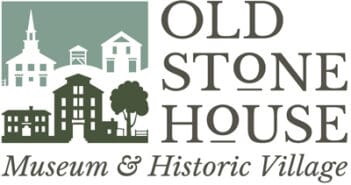Alexander Lucius Twilight
African American Alexander Lucius Twilight was born in Corinth, Vermont on September 23, 1795, the third of six children. His parents were Ichabod and Mary Twilight, who were both listed in the Corinth town history as “the first negroes to settle in Corinth.” Ichabod served during the Revolutionary War from 1782-3 as a ‘private’ in the Continental Army, Second New Hampshire Regiment, 6th Company.
Alexander labored for a neighboring farmer in Corinth, beginning around 1803 when he was only eight years old. For the next twelve years he learned reading, writing and math skills while performing various farming duties. He was able to save enough money to enroll in Randolph’s Orange County Grammar School in 1815 at the age of 20. During the next six years (1815-1821) he completed not only the secondary school courses but also the first two years of a college level curriculum. Following his graduation from Randolph he was accepted at Middlebury College, entering as a junior in August of 1821. Two years later he received his bachelor’s degree. Middlebury claims him to be the first African-American to earn a baccalaureate from an American college or university.
Alexander Lucius Twilight
Mercy Ladd Merrill Twilight
From 1824 to 1828, Mr. Twilight was employed as a teacher in Peru, New York where he met and married Mercy Ladd Merrill. Mercy came from a family of some means in Unity, New Hampshire. At the time of their marriage in 1826, Alexander was 31 and Mercy was 21 or 22 years of age. In addition to his teaching duties, Alexander continued studies that focused on theology, the Church, and ministry, occasionally leading public worship and preaching. He was licensed to preach by the Champlain Presbytery in Plattsburgh. After four years of teaching in Peru, he moved across Lake Champlain to teach in Vergennes where he spent weekends holding services in the neighboring towns of Waltham and Ferrisburg. Mr. Twilight was invited to become the principal of the Orleans County Grammar School in Brownington, Vermont after a year in Vergennes.
When Mr. Twilight arrived in Brownington in 1829 to be principal of the school, he was also invited to become the Brownington Congregational Church’s “Acting Pastor”, and was ordained by the church in November, 1829. In 1831 he led the church in conducting a revival which resulted in membership increasing to as many as a hundred who covenanted to be in fellowship. Upon their arrival in Brownington, the Twilights moved into a small three-room house a few hundred yards to the east of the school building. He at once set about building a larger home in front of this small dwelling so that the couple could accommodate as many as nine or ten boarding students. Enrollment in the school grew so fast that classroom space and available accommodations in town were being taxed. Mr. Twilight pressed his board of trustees for a larger building but failed to receive support from the majority.
Finally in 1834, he resigned as acting pastor of the church and laid out a foundation plan for land donated by Cyrus Eaton across the road from the Alexander Twilight House. It called for a four story granite building measuring 36 x 66 feet. Over the following two years the present stone house was erected following the lines and general appearance of a similar building, quite possibly Painter Hall at Middlebury College. The first three floors featured a kitchen, dining room, parlor, 14 student dorm rooms and 6 recitation rooms. The fourth floor consisted of two classrooms, one of them a 20 x 40 foot assembly room which was probably large enough to accommodate the entire student body. As with other Grammar Schools of the period, females comprised a third of the student body.
It is not known how the building was funded. One source (the Rev. Clark Ferrin, pastor in Barton writing in 1868) reports that “on his (Mr. Twilight’s) own resources he set to work and built the granite house.” Others suggest that Cyrus Eaton, who had just built on adjacent land, loaned Twilight the substantial funds necessary to finance construction. However it was financed, the granite was harvested from nearby fields and the building slowly emerged. It was named “Athenian Hall” and was ready for occupancy in 1836.
Mr. Twilight continued to lead the grammar school until October 1855 at which time he suffered a major stroke, which left him paralyzed. He died two years later and was buried in the graveyard adjoining the Congregational Church.
